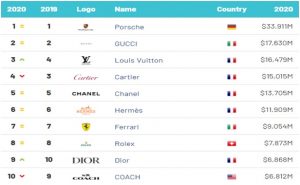The communications system forms the basis of the economic development of a country and plays a key role in every aspect of an individual’s life. The communications system in India has come a long way from the use of telegrams in the 1850s to the extensive use of the Internet in the present times. It is pertinent to note that the foundation of telecommunications in India was laid by the British East India Company (referred to as ‘EIC’ hereafter), and was later developed by the British Government, under the British Crown.
- Development of Telegraph services under the British regime
Research in the field of telegraph started in India way back in 1833 when a 24-year-old assistant surgeon with the East India Company (EIC), Mr. William O’Shaughnessy, started experimenting with electricity.[1] In 1839, he set up a 13.5-mile-long demonstration telegraph system near Calcutta.[2] During the same time, Samuel F.B. Morse was developing his own demonstration system back in the United States.[3] However, O’Shaughnessy was completely unaware of this development, and therefore, used a different code which was indigenously developed. On successful experimentation, he published a pamphlet about his work, but he was unable to catch the attention of the EIC.
Learn more about Technology Law with Enhelion’s Online Law firm certified Master Course!
The state of affairs changed in 1847 when Lord Dalhousie was appointed as the Governor-General of India.[4] He showed real interest in developing public works like roads, canals, railways, and postal services in India. He also envisioned the potential of the telegraph invented by O’Shaughnessy and authorized him to build a 30 miles long line near Calcutta. This was the first experimental electric telegraph line in India which started between Calcutta and Diamond Harbour in 1851[5]. The success of this electric telegraph line incentivized Lord Dalhousie to authorize O’Shaughnessy to build telegraph lines across India.[6]
O’Shaughnessy completed the work assigned to him by 1854, and as a result, Calcutta was linked to Agra, Bombay and Madras by the telegraph network.[7] From 1851 till 1854, the telegraph was strictly limited to use by the EIC. In April 1854, first telegram was sent from Mumbai to Pune and electronic telegraph facilities were made open to use by the public[8]. Taking these developments and the subsequent need for legislation to regulate the establishment and management of electronic telegraphs in India into consideration, the Electronic Telegraphs Act of 1854[9] was enacted. The 1854 Act provided exclusive right to establishing telegraph lines in India to the EIC, however, the Governor-General of India in Council was given the power to grant the license to any person or company to establish a line[10]. The Act further established a separate Electric Telegraph Department[11]. The Act penalized the laying down of telegraph lines in contravention of the provisions of the Act.[12] It also penalized the persons who willfully caused interruption to the transmission of signals[13].
Learn more about Technology Law with Enhelion’s Online Law firm certified Master Course!
The development of the telegraph system continued and by 1856, 4000 miles of Indian telegraph system was established connecting Calcutta, Agra, Bombay, Peshawar, and Madras.[14] It is believed that the Indian telegraph service played an instrumental role in suppressing the 1857 sepoy mutiny.[15] It proved to be a critical military tool by rapidly providing a reliable system of information which was used by the EIC to mobilize its troops. Owing to the significance of the telegraph network in suppressing the 1857 revolt, a number of Indians tried to destroy the same as an act of vengeance.[16]
The 1857 sepoy mutiny led to a significant change in power in the Indian colony. The Electric Telegraph Act of 1854 was repealed, and the Telegraph Act of 1860[17] was enacted to reflect the shift of power from British EIC to the British Crown. The 1860 Act brought two significant changes to its predecessor. Firstly, it gave the exclusive power previously enjoyed by the EIC to the Governor-General of India in Council[18]. The Governor-General also retained its power to grant licenses to private individuals and companies for establishing the telegraph lines. Secondly, considering the attempts of Indians to destroy the telegraph network post-1857 revolt, the Act of 1860 increased the number of penalties for intruding into the signal room[19] and cutting the line[20].
Learn more about Technology Law with Enhelion’s Online Law firm certified Master Course!
The developments in the telegraph system in India were accelerated once submarine cables were completed between India and Britain in 1870.
The next significant step in the evolution of communications services in India was the enactment of the Indian Telegraph Act of 1876[21], which repealed the 1854 Act[22]. The 1876 Act was applicable to the whole of British India as well as British subjects in the Princely States[23]. The Act is considered as the first comprehensive legislation regulating telegraph services in India. It defined the terms like ‘telegraph’, ‘telegraph officer’ and ‘message’[24]. ‘Telegraph’ was defined as an electric or magnetic telegraph[25]. Just like the 1854 Act, the Governor-General retained his power of exclusive privilege and the right to grant a license under the 1876 Act.[26] The Act further increased the penalties for causing destruction to the telegraph network. The most peculiar feature of the 1876 Act was the provision for the deployment of additional police in places where mischief to telegraphs was repeatedly committed[27]. In such a scenario, the inhabitants of such a place were required to bear the cost of such deployment[28].
Learn more about Technology Law with Enhelion’s Online Law firm certified Master Course!
After the 1876 Act came into force, in 1880, two private telephone companies namely Oriental Telephone Company Ltd. and The Anglo-Indian Telephone Company Ltd. approached the Governor-General of India to propose establishing telephone exchanges in India.[29] They were denied permission on the ground that the introduction of telephones was a Government monopoly and hence the Government itself would commence the work.[30] However, in 1881, the decision was reversed and Oriental Telephone Company Ltd. was granted a license for opening telephone exchanges at Kolkata, Mumbai, Chennai and Ahmedabad. The telephone came to India a little later in 1882.[31]
In 1883, the telegraph services were combined with postal services.[32] In the meanwhile, a Bill proposing the repeal of the 1876 Act was tabled to the Council. The Bill suggested modification of the definition of ‘telegraph’ to be in consonance with the developments in Britain. It also suggested the creation of a new category of penalties. This led to the enactment of the Telegraph Act of 1885[33]. The Act broadened the definition of ‘telegraph’ to include “appliances and apparatus for transmitting or making telegraphic, telephonic or other communications by means of electricity, galvanism or magnetism”[34]. The Act also created a Telegraph Authority, which meant the Director-General of Telegraphs and included any officer empowered by him[35]. Just like its 1860 and 1876 predecessors, the Governor-General enjoyed the exclusive privilege and the right to grant a license under the 1885 Act as well. The Act further granted the power to Government to take possession of licensed telegraphs to intercept messages[36].
Learn more about Technology Law with Enhelion’s Online Law firm certified Master Course!
In 1888, overseas communications were merged with the Director-General of the Indian Telegraph Department.[37]
The next significant development took place in 1902 when cable telegraphs were changed to wireless telegraphs.[38] Therefore, in 1902, the Indian telegraph services went wireless. Furthermore, in 1914, a big administrative change happened. The Postal Department and the Telegraph Department were amalgamated under a single Director-General by amending the definition of ‘telegraph authority under the 1885 Act[39].
The 1885 Act underwent a number of changes in the years 1914, 1930 and 1937. As per the amendment of section 4 in 1914, the Government was given the power to establish and maintain wireless telegraphs on ships within Indian territorial waters and telegraphs other than wireless telegraphs[40]. This provision was further amended in 1930 to include the use of wireless telegraphy on aircraft[41].
- Development of Radio broadcasting services under the British regime
Respect to radio broadcasting, broadcasting was introduced as a private venture through radio clubs in Calcutta, Madras, Bombay and Lahore in 1923 and 1924.[42] In June 1923, the Radio Club of Bombay made the first-ever broadcast in India. In 1927, Calcutta Radio Club was established. During this time period, there was a daily broadcast of 2-3 hours of music and talks. However, most of these stations faced liquidation within three years of their establishment due to insufficient finances.[43]
The year 1927 also witnessed an agreement between the Government and a private company named Indian Broadcasting Company Ltd. (IBC).[44] This agreement led to the setting up of the Broadcasting Service which began broadcasting in 1927 on an experimental basis in Bombay and later in Calcutta. However, IBC faced liquidation within 3 years of its establishment.[45] The government acquired its assets and established the Indian Broadcasting Service under the Department of Labour and Industries.[46] Since then, broadcasting has remained under the control of the Government in India.
Learn more about Technology Law with Enhelion’s Online Law firm certified Master Course!
Following the establishment of the Indian Broadcasting Service, in 1935, Lionel Fielden was appointed the first Controller of Broadcasting.[47] In the same year, a private radio station, Akashvani Mysore, was set up.[48] In 1936, a radio station was commissioned in Delhi.
The next significant step in the development of radio broadcasting services in India was the renaming of the Indian State Broadcasting Service as ‘All India Radio’, or AIR in June 1936.[49] A new signature tune was added to AIR. The Delhi radio station, established in the same year, became the nucleus of broadcasting at the national level. In 1937, AIR was brought under the Department of Communications and in 1941, under the Department of Information and Broadcasting. The Department of Information and Broadcasting was again changed to the Department of Information and Broadcasting (I&B) on 10th September 1946.[50]
Radio broadcasting underwent considerable developments during World War II. By 1939, the entire country was covered by short-wave service. Taking into account the outbreak of World War, the programme structure of radio underwent a change to meet wartime contingencies. News and political commentaries were introduced and special broadcasts were made for the people on the strategic north-eastern and north-western borders.
- Regulation of Wireless Telegraphy in the British regime
Wireless telegraphy in India developed in line with the development of radio services. One of the major sources of revenue for the Indian State Broadcasting Service was revenue from the licence fee for working of wireless apparatus under the Indian Telegraph Act, 1885. Owing to the lack of legislation dealing with the unlicensed use of wireless apparatus, the Indian State Broadcasting Service faced substantial revenue losses. To deal with the unlawful possession of wireless telegraphy apparatus, the Indian Wireless Telegraphy Act of 1933[51] was enacted.
Learn more about Technology Law with Enhelion’s Online Law firm certified Master Course!
The 1933 Act defined terms like ‘wireless communication’ and ‘wireless telegraphy apparatus.[52] The Act prohibited the possession of wireless telegraphy apparatus without a license under section 4. The telegraph authority under the Indian Telegraph Act of 1885 was given the power to issue licenses to possess wireless telegraphy apparatus under the Act[53]. The act of possession of wireless telegraphy apparatus without a license was made a punishable offence[54].
- The relevance of Communication Laws enacted in the British regime after the coming into force of the Constitution of India in 1950
When India became independent, there were over 7000 telegraph offices and about 300 state-owned telephone services, across the country. Furthermore, there were 6 AIR stations at Delhi, Bombay, Calcutta, Madras, Lucknow and Tiruchirapalli, with 18 transmitters, among which six were on the medium wave and the remaining were on short wave.
The legal regime governing the telecommunications sector in India developed to a considerable extent after independence owing to technological changes, however, it is pertinent to note that the government decided to adopt certain key legislation relating to the telecommunications sector which was in force during the British regime. The most significant adoption was the exclusive privilege over the telegraph service and right to grant a license, enjoyed by the Government over the telecommunications sector in the British regime. This status was adopted in the Constitution of India by virtue of Entry 31 of List I in Schedule 7 which puts ‘posts and telegraphs, telephones, wireless, broadcasting, and other like forms of communications’ in the exclusive domain of the Union List[55]. The then Prime Minister of India, Jawaharlal Nehru, was also of the opinion that the telecommunication sector should be retained by the Central Government owing to its criticality to the development of India.
The Telegraph Act of 1885 was amended in the year 1948 to substitute the word ‘Provinces’ with ‘India’[56]. Although the definition of ‘telegraph’ has been amended in the subsequent years to ensure that technological development does not leave out certain services from being regulated by the state, however, the basic premise of the 1885 Act has remained intact over the years.
Learn more about Technology Law with Enhelion’s Online Law firm certified Master Course!
The Wireless Telegraphy Act, 1933 too is still in existence and retains most of the provisions of the original Act.
With respect to radio broadcasting services, All India Radio is in existence even today, under the control of the Ministry of Information and Broadcasting.
Therefore, the British regime did not only help India in laying the infrastructural foundations of communications, it also helped to develop a legal regime governing the same. This legal regime is still operational, with certain amendments aimed at adopting the dynamic nature of technology.
Learn more about Technology Law with Enhelion’s Online Law firm certified Master Course!
[1] John H. Lienhard, Indian Telegraph, https://www.uh.edu/engines/epi1380.htm (last visited Apr. 20 2021).
[2] Id.
[3] Indian telegraph Service, INDIAN PHILATELY, http://www.indianphilately.net/indiantelegraph.html (last visited Apr. 20 2021).
[4] Lienhard, Supra note 1.
[5] Development of posts and telegraph during the British rule, https://madhyapradesh.pscnotes.com/modern-history/development-of-posts-and-telegraph-during-the-british-rule/ (last visited Apr. 20 2021).
[6] Lienhard, Supra note 1.
[7] Supra note 3.
[8] Maninder Dabas, Today in 1854, first telegrpoh was sent in India, INDIA TIMES (Apr, 27, 2017, 4:15 PM), https://www.indiatimes.com/news/today-in-1854-first-telegram-was-sent-in-india-between-mumbai-and-pune-here-is-all-about-the-telegraph-service-that-ende.
[9] Electronic Telegraphs Act, 1854, available at https://www.wipo.int/edocs/lexdocs/laws/en/in/in116en.pdf.
[10] Id, § 1.
[11] Supra note 9, § 7.
[12] Supra note 9, § 2.
[13] Supra note 9, § 9.
[14] Lienhard, Supra note 1.
[15] Michael Mann, The deep digital divide: The telephone in British India, 35(1) HISTORICAL SOCIAL RESEARCH 188, 200 (2010).
[16] Id.
[17] Telegraph Act, 1860, available at https://www.wipo.int/edocs/lexdocs/laws/en/in/in117en.pdf.
[18] Id, § 2.
[19] Supra note 17, § 9.
[20] Supra note 17, § 10.
[21] Indian Telegraph Act, 1876, available at https://www.wipo.int/edocs/lexdocs/laws/en/in/in118en.pdf.
[22] Id, § 2.
[23] Supra note 21, § 1.
[24] Supra note 21, § 3.
[25] Id.
[26] Supra note 21, § 4.
[27] Supra note 21, § 16.
[28] Id.
[29] Gopika G G, Growth and development of telecom sector in India- An overview, 16(9) IOSR-JBM 25, 26 (2014).
[30] Id.
[31] Id.
[32] Id.
[33] Telegraph Act, 1885, available at https://www.wipo.int/edocs/lexdocs/laws/en/in/in119en.pdf.
[34] Id, § 3(1).
[35] Supra note 33, § 3(6).
[36] Supra note 33, § 5.
[37] Id.
[38] Gopika G G, Growth and development of telecom sector in India- An overview, 16(9) IOSR-JBM 25, 33 (2014).
[39] Supra note 33, § 3(6).
[40] Act 7 of 1914.
[41] Act 27 of 1930.
[42] Growth and development, PRASAR BHARTI, https://prasarbharati.gov.in/growth-development-air/ (last visited 20 Apr. 2021).
[43] Id.
[44] Alasdair Pinkerton, Radio and the Raj: Broadcasting in British India (1920-1940), 18(2) JOURNAL OF THE ROYAL ASIATIC SOCIETY 167, (2008).
[45] Id. at 175.
[46] Id.
[47] Id.
[48] Supra note 42.
[49] K.C. Archana, 80 years of AIR: Remembering the golden days of All India Radio, INDIA TODAY (June 8, 2016, 3:51 PM), https://www.indiatoday.in/fyi/story/80-years-of-air-remembering-the-golden-days-of-all-india-radio-12987-2016-06-08.
[50] Id.
[51] Indian Wireless Telegraphy Act, 1933, available at https://www.wipo.int/edocs/lexdocs/laws/en/in/in037en.pdf.
[52] Id. § 2.
[53] Supra note 51, § 5.
[54] Supra note 51, § 6.
[55] Constitution of India, 1950, Schedule VII, List I, Entry 31.
[56] Act 45 of 1948.



